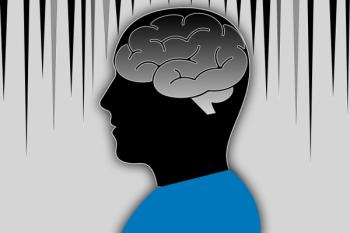
When Silence Speaks: A Case of Hypoactive Postoperative Delirium in an Older Patient
Key Takeaways
- Postoperative delirium is frequently underdiagnosed, especially in its hypoactive form, and can be mistaken for other psychiatric conditions.
- The pathophysiology involves inflammation, oxidative stress, and neurotransmitter imbalances, leading to decreased acetylcholine and increased dopamine activity.
Postoperative delirium often goes unrecognized, especially in older patients, leading to significant cognitive decline and longer hospital stays.
TALES FROM THE CLINIC
-Series Editor Nidal Moukaddam, MD, PhD
In this installment of Tales From the Clinic: The Art of Psychiatry, we discuss postoperative delirium. Delirium is overall underrecognized and misdiagnosis for psychiatric entities is common. A red flag for delirium in charts and large hospital systems is the sudden appearance of a “
Case Vignette
“Ms Jackie” is a 78-year-old woman with a history of coronary artery disease, osteoarthritis, and mild
On post-op day 2, the nursing team reports that the patient is unusually withdrawn. She remains in bed most of the day, eats very little, and responds to questions slowly and with minimal engagement. Unlike her baseline, she does not initiate conversation or ask about her daughter, who normally visits daily. She appears drowsy, inattentive, and intermittently confused, though not agitated. When she does respond, then answers are bizarre and suggestive of hallucinations. At one point, she was noted to be mumbling that her husband was in the corner making out with a highschool exgirlfriend. At another point, her 1 to 1 sitter noted her saying “water, water everywhere.”
Her vitals are stable, labs are within normal limits, and her pain is controlled with low-dose hydromorphone. Chart review reveals that she received diphenhydramine overnight for pruritus. A neurologic exam shows no focal deficits, but her attention and short-term memory are impaired. A Confusion Assessment Method (CAM) screening is positive for acute onset, inattention, fluctuating consciousness, and disorganized thinking. The hospitalist diagnoses hypoactive postoperative delirium, likely due to a combination of recent surgery, baseline cognitive decline, and exposure to sedating medications.
What Is Postoperative Delirium?
Delirium is defined as difficulty sustaining or shifting attention, reduced awareness of surroundings, and fluctuating alertness. The DSM-5 outlines delirium through the 5 criteria located in the
The pathophysiology of delirium is complex and often multifactorial. Leading hypotheses on the cause of delirium include a combination of inflammation, oxidative stress, and depletion of oxygen.4 These factors increase the brain’s exposure to toxins and disrupt the balance of neurotransmitters—specifically causing decreased acetylcholine and increased dopamine activity.4
Postoperative delirium is a type of delirium that occurs following procedures done under general anesthesia. This postoperative delirium may occur anywhere from several minutes after surgery all the way up to several days post-op.5 This type of delirium mostly affects those over the age of 70. Some studies estimate that 1 out of every 3 patients over the age of 70 will experience delirium in the hospital, and approximately 1 in every 2 patients over the age of 70 will experience delirium after undergoing a major surgical procedure.1 Additional factors that risk developing delirium include, but are not limited to, sensory impairments, emotional distress, renal dysfunction, underlying cognitive impairment, among others.6 Therefore, it is important to look for and be able to identify any potential signs of delirium so they may be addressed immediately.
Diagnosis
Delirium should be considered a medical emergency, as long lasting delirium may have detrimental effects on one’s health and well-being. Clinicians and hospital staff should be keen to any sudden changes in a patient's mood, behavior, or level of functioning, especially following any major procedure. Once a change is noticed, clinicians should rule out any potential confounding factors that may have caused the delirium, including medication changes, labs, vital signs, and any other potential medical cause.1
Delirium is typically diagnosed with the help of various cognitive assessments. One meta-review claims that the CAM boasts a 94% sensitivity and a 89% specificity, therefore it is considered the gold standard for acutely determining the presence of delirium. Several other tools have been used to establish the diagnosis such as the Delirium Triage Screen and the Richmond Agitation-Sedation Scale. These tools, however, were not found to be as precise and accurate as the CAM in clinical settings.7 The CAM was developed in 1990 as a way to improve the clinical understanding of the effects of delirium.8 This clinical tool assesses nine different aspects of delirium: acute onset, inattention, disorganized thinking, altered level of consciousness, disorientation, memory impairment, perceptual disturbances, psychomotor agitation or retardation, and altered sleep-wake cycle.8 The success of this tool has been published in several places and is used extensively for evaluation of acute delirium in hospitalized patients.
Treatment
After the diagnosis of delirium has been established, the team must consider several potential causes of the altered mental status. Some common causes include medication changes, infection, and substance use.9 If any of these have been identified, the first step in managing delirium is switching medications, treating the infection, or avoiding the abused substance.
Further treatment of delirium begins with physical changes to the patient and their rooms in order to reorient the patient to the situation. This process includes things such as keeping the lights on in the day, allowing for easy patient mobility, ensuring the patient is wearing any required hearing aids or glasses, and establishing a stable sleep regiment.9 Some complex cases require the use of pharmacotherapy in addition to the physical changes. Several medications can be used to improve the outcomes of patients with delirium. Some of the most common medications are antipsychotics, alpha-2 agonists, benzodiazepines, and anticholinergic drugs. One study suggests that the most effective pharmacotherapy for patients with delirium are the antipsychotic agents such as haloperidol, olanzapine, quetiapine, and so on, or dexmedetomidine, an alpha-2 agonist.10
Discussion
Ms Jackie’s case illustrates the clinical complexity and diagnostic challenges of postoperative delirium, particularly its hypoactive form, which is often underrecognized despite being associated with significant morbidity in older surgical patients. Delirium is important to characterize and treat early because it can lead to longer hospital stays and increased mortality rates.11 Additionally, it can lead to a significant decline in cognitive function both initially after surgery and up to years later. One study looked at the impact of those who experienced postoperative delirium impact on their long-term cognitive functioning. After surgery, cognitive function drops initially before steadying slightly then eventually dropping slightly more up to 3 years after surgery. Those who experienced postoperative delirium saw a larger initial decline in cognitive function, and more long-term cognitive decline than those who did not experience delirium.12 The actual cause of this cognitive decline postdelirium is still being researched today.
To prevent these adverse effects, clinicians and their teams should be alert to any acute changes in cognition. Continuing, teams should be cognizant of any medication changes or any new symptoms following surgery, as they may lead to developing delirium, especially in the older adult population. Ultimately, early recognition and prompt intervention are essential in the mitigation of long-term consequences of postoperative delirium. By maintaining vigilance and employing a multidisciplinary approach, health care teams can improve outcomes and preserve cognitive health in vulnerable surgical patients like Ms Jackie.
Mr Schutt is a medical student at Texas A&M EnMed. Dr Safavi is the system director of emergency psychiatry at Houston Methodist and an assistant professor of psychiatry & behavioral sciences at Baylor College of Medicine.
References
1. Marcantonio ER.
2. European Delirium Association, American Delirium Society.
3. Diagnostic and Statistical Manual of Mental Disorders, Fifth Edition, Text Revision. American Psychiatric Association; 2013.
4. Thom RP, Levy-Carrick NC, Bui M, Silbersweig D.
5. Janjua MS, Spurling BC, Arthur ME.
6. Fong TG, Tulebaev SR, Inouye SK.
7. Mariz J, Costa Castanho T, Teixeira J, et al.
8. Wei LA, Fearing MA, Sternberg EJ, Inouye SK.
9. Robinson TN, Eiseman B.
10. Sadlonova M, Duque L, Smith D, et al.
11. Faeder M, Hale E, Hedayati D, et al.
12. Inouye SK, Marcantonio ER, Kosar CM, et al.
Newsletter
Receive trusted psychiatric news, expert analysis, and clinical insights — subscribe today to support your practice and your patients.













